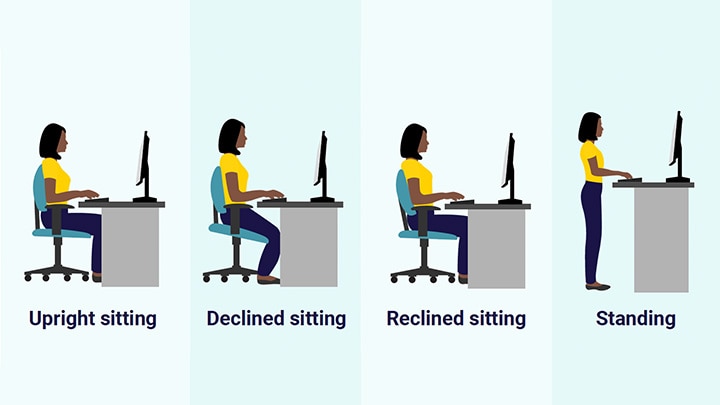Common Ergonomics Mistakes That Need To Be Avoid During Working From Home

What Is Ergonomic?
According to the Occupational Safety and Health Administration (OSHA), ergonomics is the process of designing or arranging workplaces, products and systems so that they fit the people who use them. As the technologies getting modern, so does the need to ensure that the tools we access for work are designed according to our body requirements.
Why Is Ergonomic Important?
An ergonomic workspace ensures you work efficiently and safely by protecting your body from recurring pain. This is important especially when you are working remotely in a home. Ergonomics aims to create safe, comfortable and productive workspaces. Not only that, it also minimizes the risk of injury. Study shows that work-related musculoskeletal disorders are among the most frequently reported causes of lost work time or absenteeism.
Ergonomic Mistakes To Avoid In Your Home
Some mistakes may compromise your health and productivity while working remotely from home. Here are some tips and tricks to help you create an ergonomic workstation at home:
- Prolong laptop use : Working on your laptop for a few hours can lead to back, shoulder, and neck strain. Use an external monitor or laptop stand to prop up your screen. Make sure your eye line should be level with the address bar on your web browser.
- Working from the couch : This may cause you discomfort, pain and numbness over time. Choose a chair that offers adjustable seat height, armrests, backrest and lumbar support. The right chair should support the curve of your spine.
- Poor posture : Putting a firm cushion or tightly folded towel under your buttocks will raise your hips and increase the curve of your spine, making sitting more comfortably. Study shows that it is important to change positions every 30-90 minutes.
- Letting your feet dangle : Place your feet down and make sure it is supported, so that your thighs are nearly parallel to the floor and your hips are slightly higher than your knees. This stabilizes your lower back, leading to fewer chances of incurring back pain.
- Hands are at an odd angle when typing : Pull back your seat and raising your seat height. The best posture for keyboarding is a 90-degree bend of the elbows to keep your wrists straight. Make sure your shoulders are relaxed and externally rotated.
- Too much screen time : The American Academy of Ophthalmology recommends the “20-20-20” rule. For every 20 minutes spent looking at a computer screen, you should spend 20 seconds looking at something else 20 feet away. Too much light can lead to headaches, fatigue, blurred vision or eye irritation.

By having a good ergonomic and protecting your body from injury, you're better able to focus on your task, makes you a more efficient and productive worker.
Aug 08,2024
